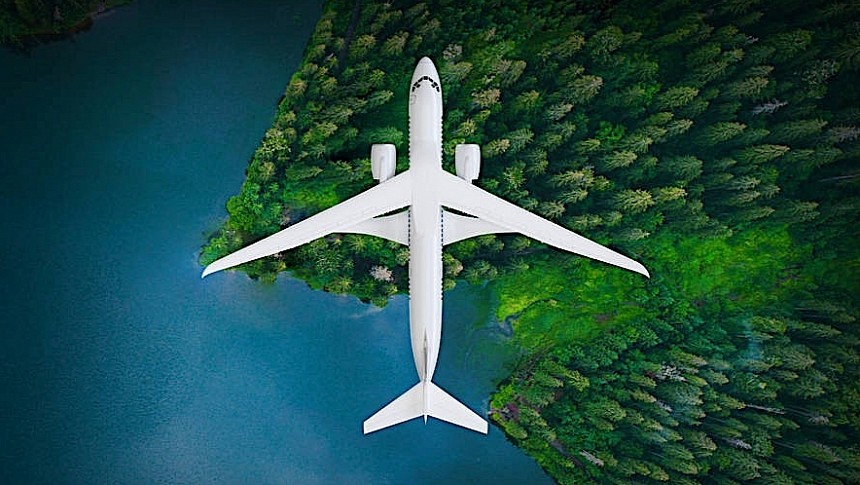As it looks to cut down emissions throughout most of its industries, the United States articulated a while ago something called the Aviation Climate Action Plan. One of the goals stated there is to make the nation's aviation industry net zero when it comes to greenhouse emissions by the middle of the century.
For that to happen it's not enough to make the switch to Sustainable Aviation Fuel (SAF), for instance. New aircraft and aircraft engine designs need to be created, and America's space agency, NASA, is involved knee-deep in both these avenues of research.
On the aircraft design front NASA announced earlier this year the start of something called the Sustainable Flight Demonstrator project. It's an effort meant to give s slightly new shape to single-aisle aircraft wings, in a bid to cut down fuel consumption and emissions.
The agency settled on a piece of tech called Transonic Truss-Braced Wing (TTBW). In essence, we're talking about diagonal struts placed in such a way as to brace the wings to the fuselage. They make the airplane look a bit unusual, but the idea could help an aircraft not only generate more lift, but also cut back on the amount of fuel it drinks during flight.
The airplane will be built by Boeing, but the exact details about it have not been released. We do know it will not only have diagonal struts, but also extra-long, thin wings. Combined with other technologies that are yet to be detailed, the design should translate into a 30 percent reduction in fuel consumption and emissions "compared with today's best-in-class aircraft."
NASA and Boeing chose to test this idea on a single-aisle aircraft because this type of machine is the most widespread, and responsible for almost half of global aviation emissions. Cutting them down in this segment could have a significant impact on the environment.
Given how it's a piece of tech meant to "create revolutionary experimental aircraft configurations," it deserved the X-plane status and official recognition from the U.S. Air Force (USAF).
X-planes have been around at NASA since the 1940s, at a time when the agency was called the National Advisory Committee for Aeronautics (NACA), and it always involved the USAF giving airplanes used for experimental purposes special designations.
This week we learned the Sustainable Flight Demonstrator will from now on be known as the X-66A in the X-plane pantheon.
The space agency will spend $245 million in the project over the next seven years, which means we should see the plane with an unusual wing design take flight for the first time around the year 2030.
We expect to get more details on the project from both Boeing and NASA as research advances.
On the aircraft design front NASA announced earlier this year the start of something called the Sustainable Flight Demonstrator project. It's an effort meant to give s slightly new shape to single-aisle aircraft wings, in a bid to cut down fuel consumption and emissions.
The agency settled on a piece of tech called Transonic Truss-Braced Wing (TTBW). In essence, we're talking about diagonal struts placed in such a way as to brace the wings to the fuselage. They make the airplane look a bit unusual, but the idea could help an aircraft not only generate more lift, but also cut back on the amount of fuel it drinks during flight.
The airplane will be built by Boeing, but the exact details about it have not been released. We do know it will not only have diagonal struts, but also extra-long, thin wings. Combined with other technologies that are yet to be detailed, the design should translate into a 30 percent reduction in fuel consumption and emissions "compared with today's best-in-class aircraft."
NASA and Boeing chose to test this idea on a single-aisle aircraft because this type of machine is the most widespread, and responsible for almost half of global aviation emissions. Cutting them down in this segment could have a significant impact on the environment.
Given how it's a piece of tech meant to "create revolutionary experimental aircraft configurations," it deserved the X-plane status and official recognition from the U.S. Air Force (USAF).
X-planes have been around at NASA since the 1940s, at a time when the agency was called the National Advisory Committee for Aeronautics (NACA), and it always involved the USAF giving airplanes used for experimental purposes special designations.
This week we learned the Sustainable Flight Demonstrator will from now on be known as the X-66A in the X-plane pantheon.
The space agency will spend $245 million in the project over the next seven years, which means we should see the plane with an unusual wing design take flight for the first time around the year 2030.
We expect to get more details on the project from both Boeing and NASA as research advances.






